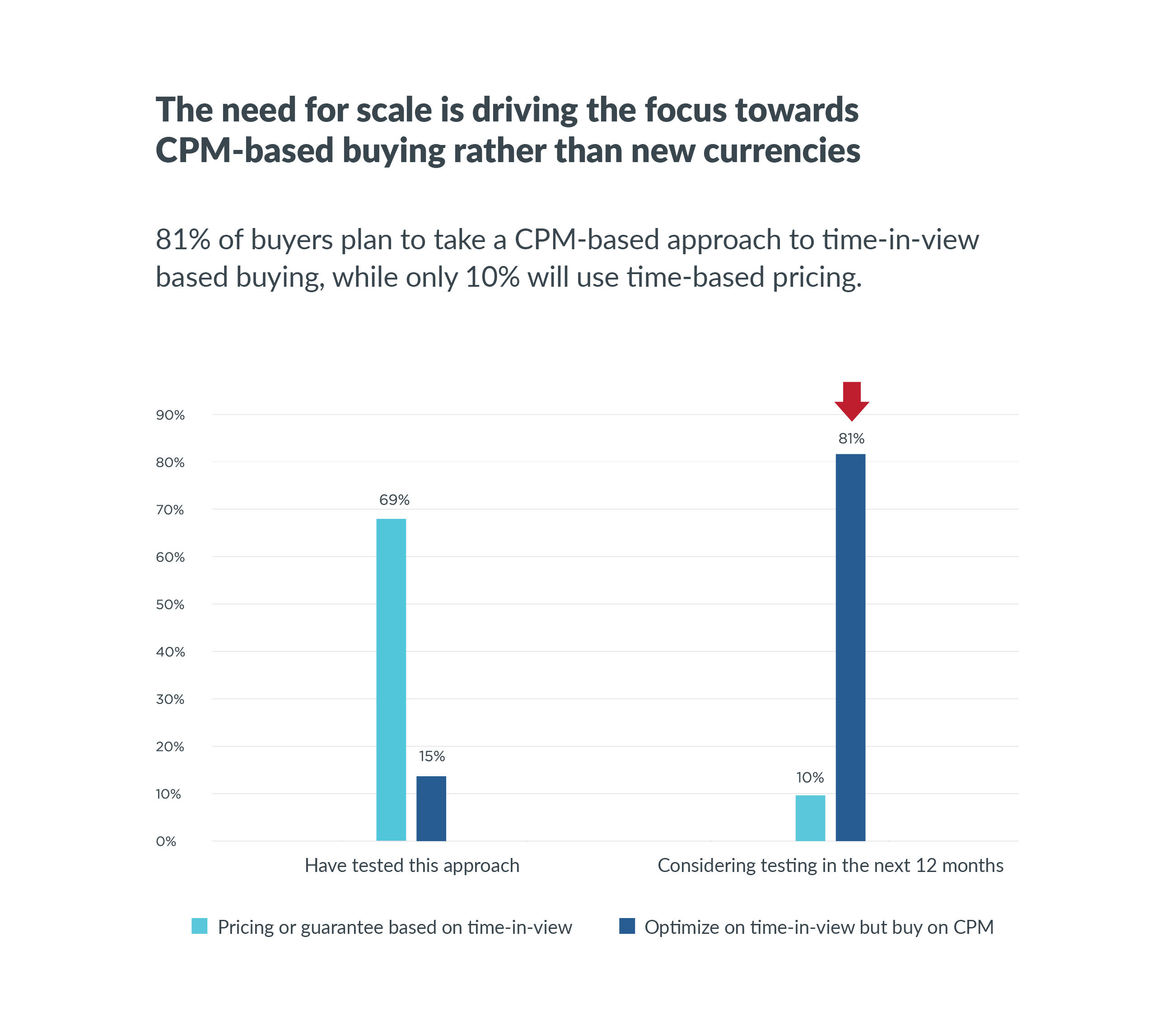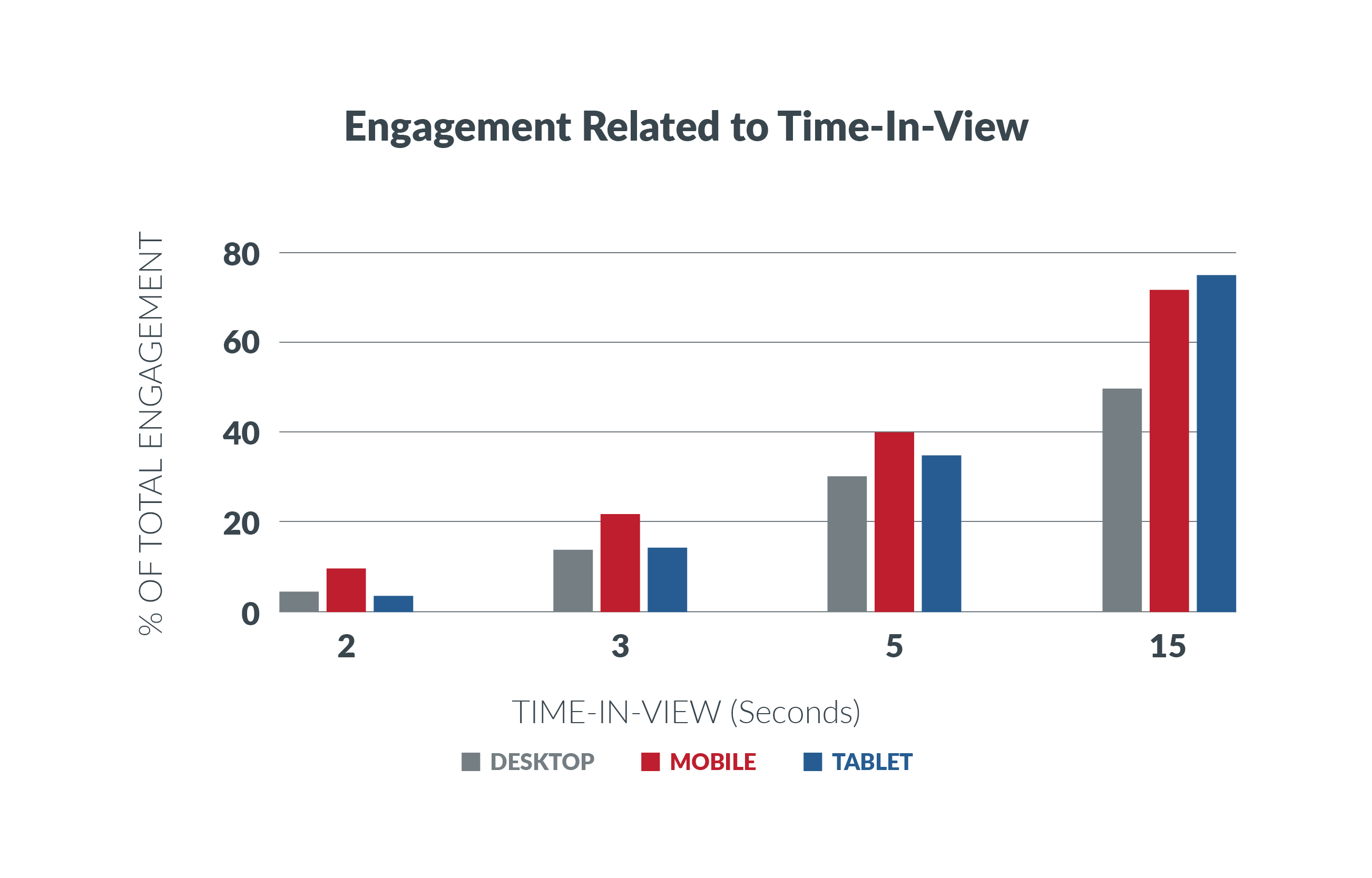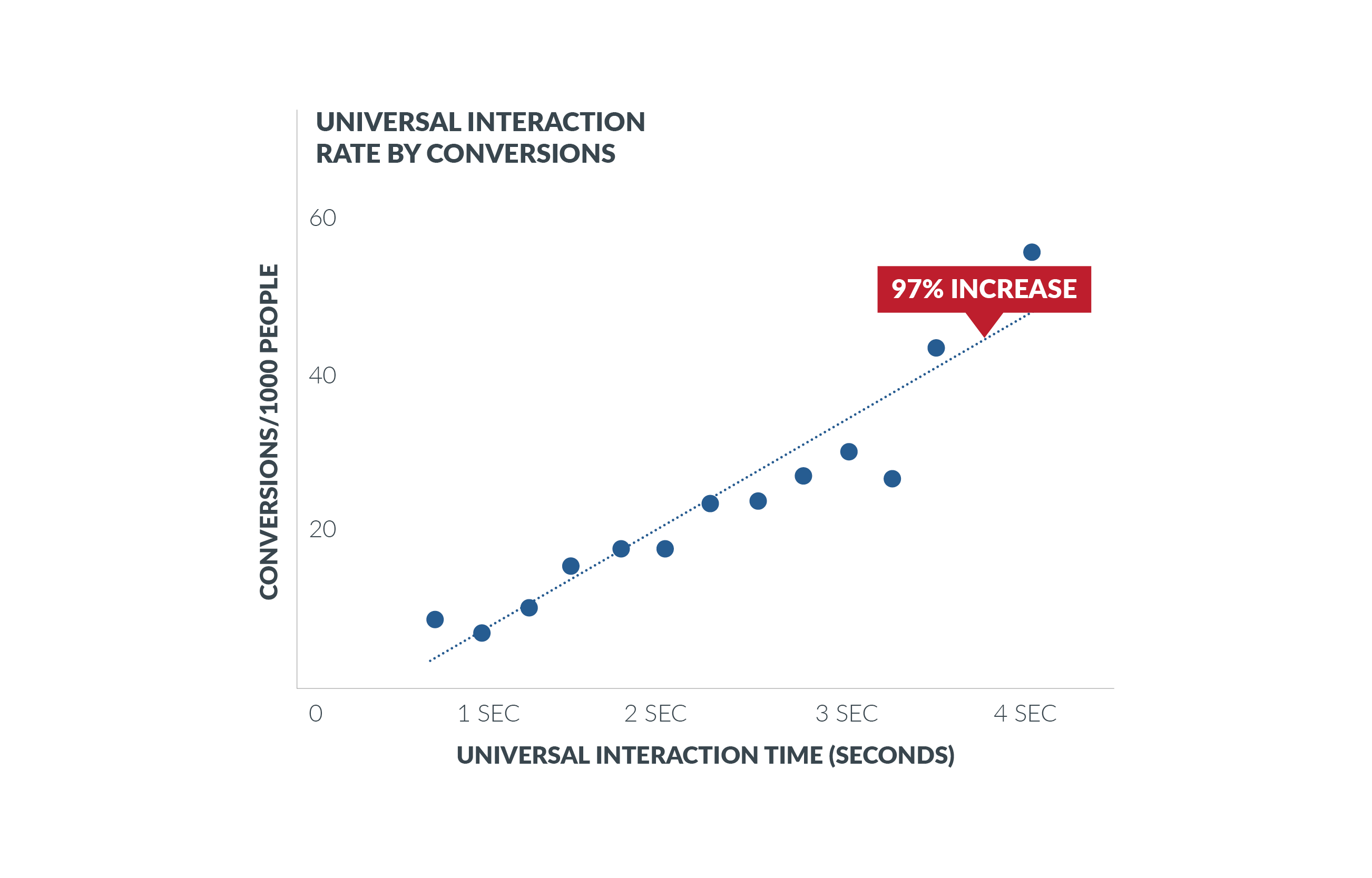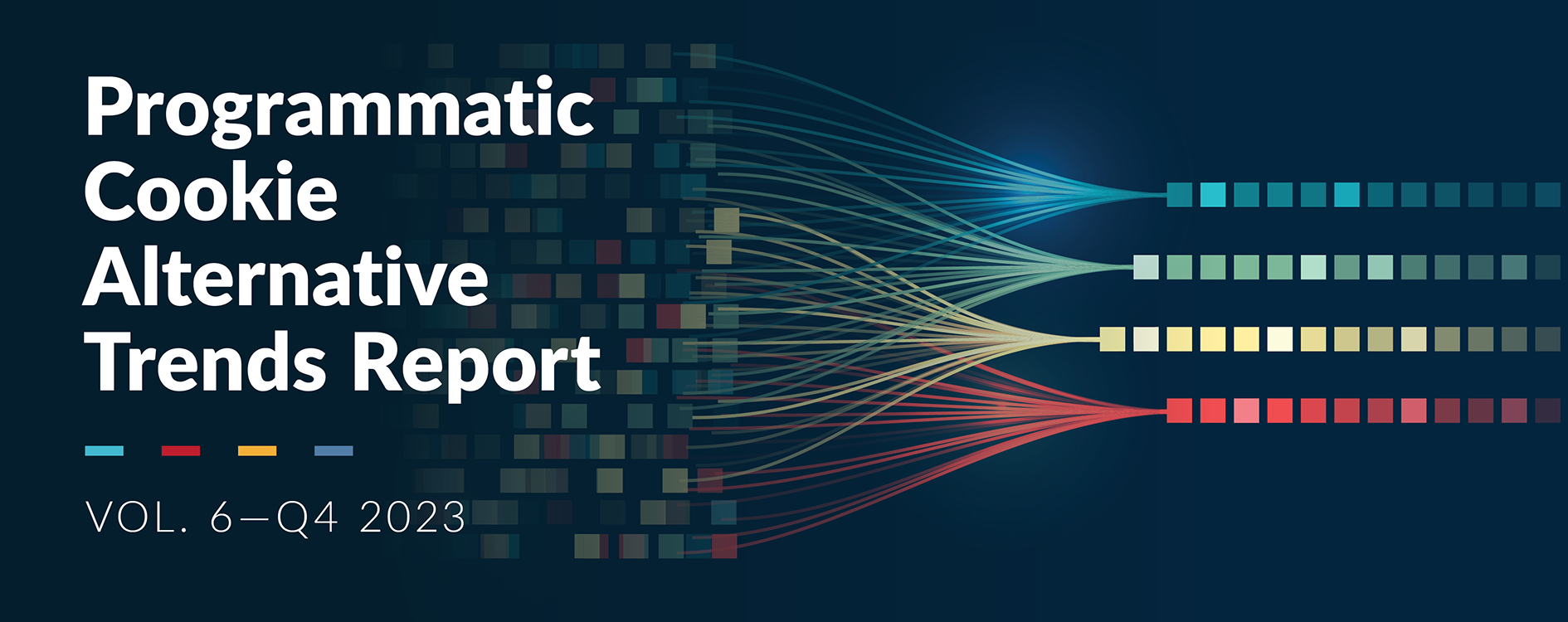For most marketers, it seems intuitive that having their ad in-view for a greater length of time would be beneficial. Programmatic media buying offers a unique opportunity for greater control, visibility, and scale around time-in-view. Unfortunately, several entrenched myths have prevented buyers from fully capitalizing on this opportunity.
Myth #1: Buying on time-in-view is too complex.
Nope. It’s actually quite simple. No specialists, insertion orders, or managed service contracts. Our AttentionX exchange, for example, makes purchasing time-in-view easy; you can buy on a CPM basis using standard programmatic strategies via the DSP of your choice. Just choose the time increments you want to target and watch your campaign perform. Like other programmatic campaigns, you can make adjustments on the fly and request 3rd party validation.
It’s becoming clear that this “pure programmatic” approach is catching on. According to a recent Digiday study commissioned by 33Across, 81% of buyers will test a CPM-based approach to time-in-view based buying this year, even as they abandon time-based currencies (cost per second, etc…). Also, agencies take note: more than 77% of brands told us that time-in-view was their preferred metric to assess the quality audience attention for their media buys, while the majority of agencies are still focused on viewability.

Source: Digiday, The Industry Quest for Quality Views
Myth #2: The high viewability box is checked, so I’m all set.
Viewability is undoubtedly important. After all, if the ad doesn’t have the opportunity to be seen it can’t be effective. But the industry’s current viewability standard dictates that only 50% of the ad needs to be in-view for a mere 1 second. After analyzing the data across our exchange, we saw that an astonishing 98% of ad engagement actually occurs after the 1 second mark, with 15 seconds needed to reach 50% of potential engagements. In short, if you’re setting the floor at 1 second, you could significantly be limiting opportunity. Check out some of our recent case studies to see what happened when both brand and performance advertisers compared the performance of high time-in-view inventory to standard viewable IAB.

Source: 33Across The Value of Time analysis
Myth #3: I’m ROAS focused, just give me scale and cheap inventory.
The great thing about programmatic buying is that it allows performance buyers to easily optimize against a number of variables in the quest for greater efficiency. If complexity and scale issues are accounted for (see Myth #1 above), then time-in-view can actually be a powerful optimization lever. Consider a recent study from IPG which shows that 97% of all conversions occur after an ad has been in view for at least 4 seconds. So what is the ideal time-in-view to maximize ROAS? We’ve found it varies from buyer to buyer, which is why we made our platform flexible. Many buyers test different thresholds (5 sec, 10 sec, 15 sec, etc…) to optimize performance.

Source: IPG Media Lab
Hopefully, you’re feeling a bit more optimistic about the potential of time-in-view-based buying to give your campaign a boost. If you’d like to learn more, you can contact us or download our time-in-view guide below.









